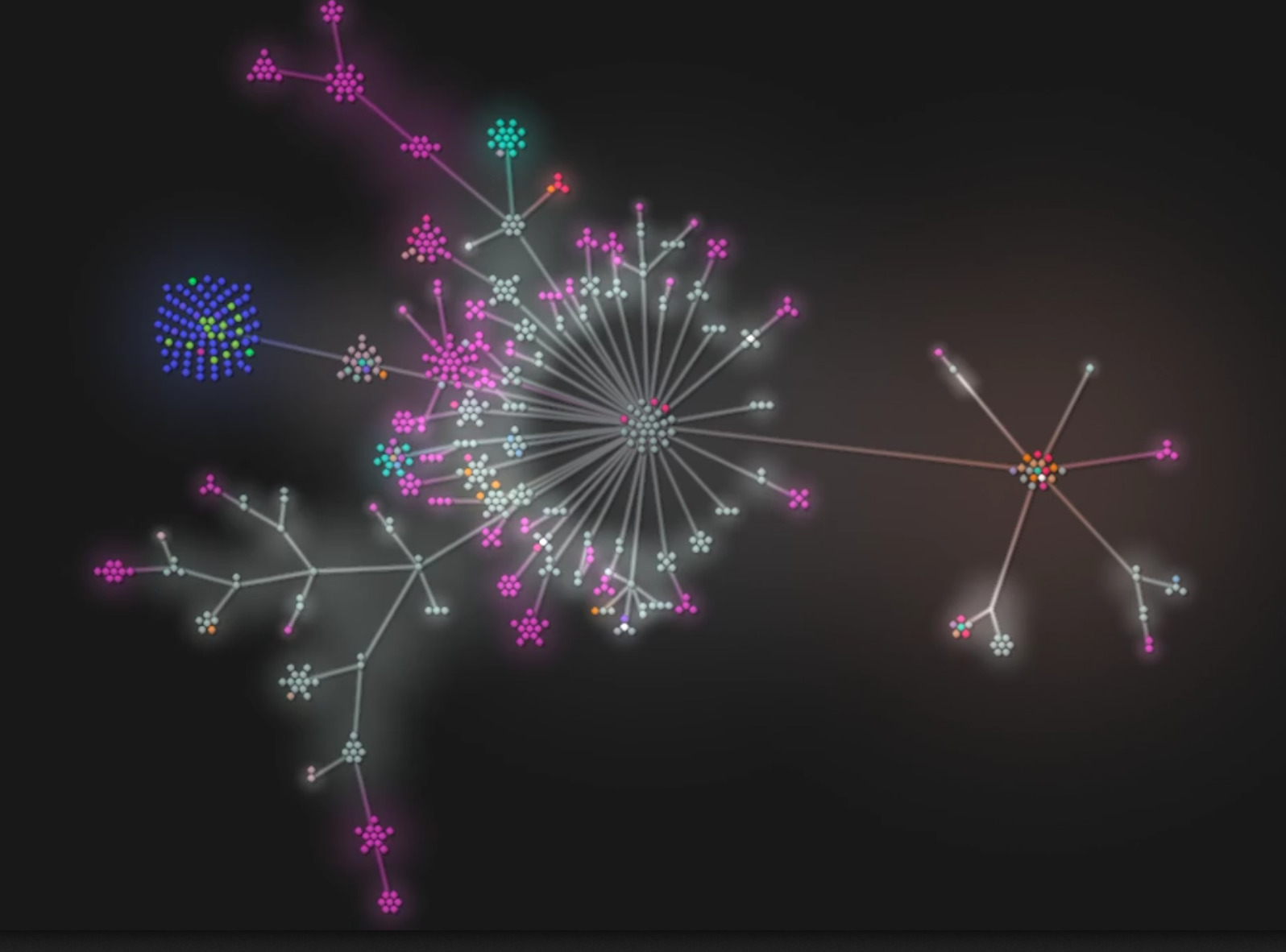Researchers Develop New Way to Explore Mathematical Universe
Published Date
By:
- Kim McDonald
Share This:
Article Content

The structure of the software underlying the LMFDB is displayed in this graphic courtesy of Alina Bucur, UC San Diego
An international group of mathematicians at UC San Diego and other institutions has produced a new kind of online resource to help discover uncharted mathematical worlds.
The “L-functions and Modular Forms Database,” or LMFDB, is an intricate catalog of mathematical objects and the connections between them. Both beautiful and functional like an atlas, the LMFDB reveals deep relationships in the abstract universe of mathematics. This coordinated effort is part of a massive collaboration of researchers around the globe, and includes developing new algorithms and performing large calculations on an extensive network of computers.
“From the periodic table of elements, to the taxonomy of species, to the Standard Model of particle physics, many of the greatest advances in sciences have involved organizing known objects in a systematic way,” says LMFDB project member Kiran Kedlaya, a professor of mathematics at UC San Diego. “Such projects reveal both new connections between previously known objects, and gaps in our knowledge that we can then try to fill. The LMFDB brings this approach to some of the most fundamental objects of mathematics, building a coherent navigable map of a universe that previously had only been studied piecemeal.”
One of the great triumphs in mathematics of the late 20th century was achieved by British number theorist Andrew Wiles in his proof of Fermat’s Last Theorem, a famous proposition by Pierre de Fermat that went unproven for more than 300 years despite the efforts of generations of mathematicians. The proof has been the subject of several documentaries and it earned Wiles the Abel Prize earlier this year.
The essence of Wiles' proof was establishing a long conjectured relationship between two mathematical worlds: elliptic curves and modular forms. Elliptic curves arise naturally in many parts of mathematics and can be described by a simple cubic equation; they also form the basis of cryptographic protocols used by most of the major internet companies, including Google, Facebook and Amazon.
Modular forms are more mysterious objects: complex functions with an almost unbelievable degree of symmetry. Elliptic curves and modular forms are connected via their L-functions. The remarkable relationship between elliptic curves and modular forms established by Wiles is made fully explicit in the LMFDB, where one can travel from one world to another with the click of a mouse and view the L-functions that connect the two worlds.
The LMFDB tabulates data which has been produced over many decades, and which is now available in one place in a unified format. The scale of the computational effort involved in the LMFDB is staggering: hundreds of years of computing time were involved in compiling the database along with thousands of hours of human effort. The application of large-scale cloud computing to research in pure mathematics is just one of the ways in which the project is pushing forward the frontier of mathematics.
“The LMFDB represents a new approach to mathematical research,” says Alina Bucur, an LMFDB contributor and assistant professor of mathematics at UC San Diego. “The traditional image of a mathematician is a solitary figure sitting in an attic, but modern mathematics is a team activity: the result of the combined effort of many individuals is much more than the sum of the parts. And working in a group is much more fun!”
Many of these calculations are so intricate that only a handful of experts can do them, and some computations are so big that it makes sense to only do them once.
“We are mapping the mathematics of the 21st century,” says LMFDB project member Brian Conrey, director of the American Institute of Mathematics. “The LMFDB is both an educational resource and a research tool which will become indispensable for future exploration.”
Share This:
You May Also Like
Stay in the Know
Keep up with all the latest from UC San Diego. Subscribe to the newsletter today.



